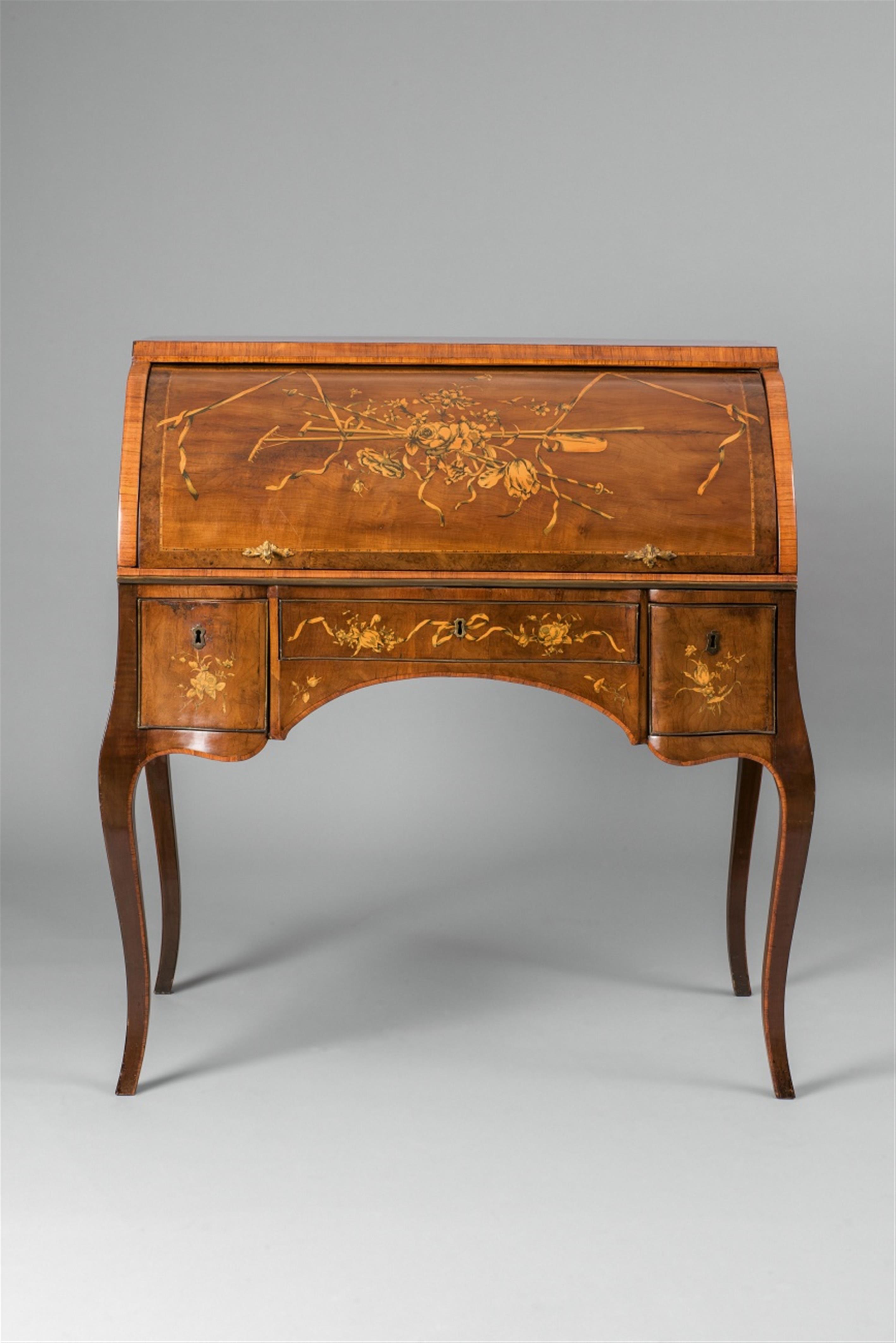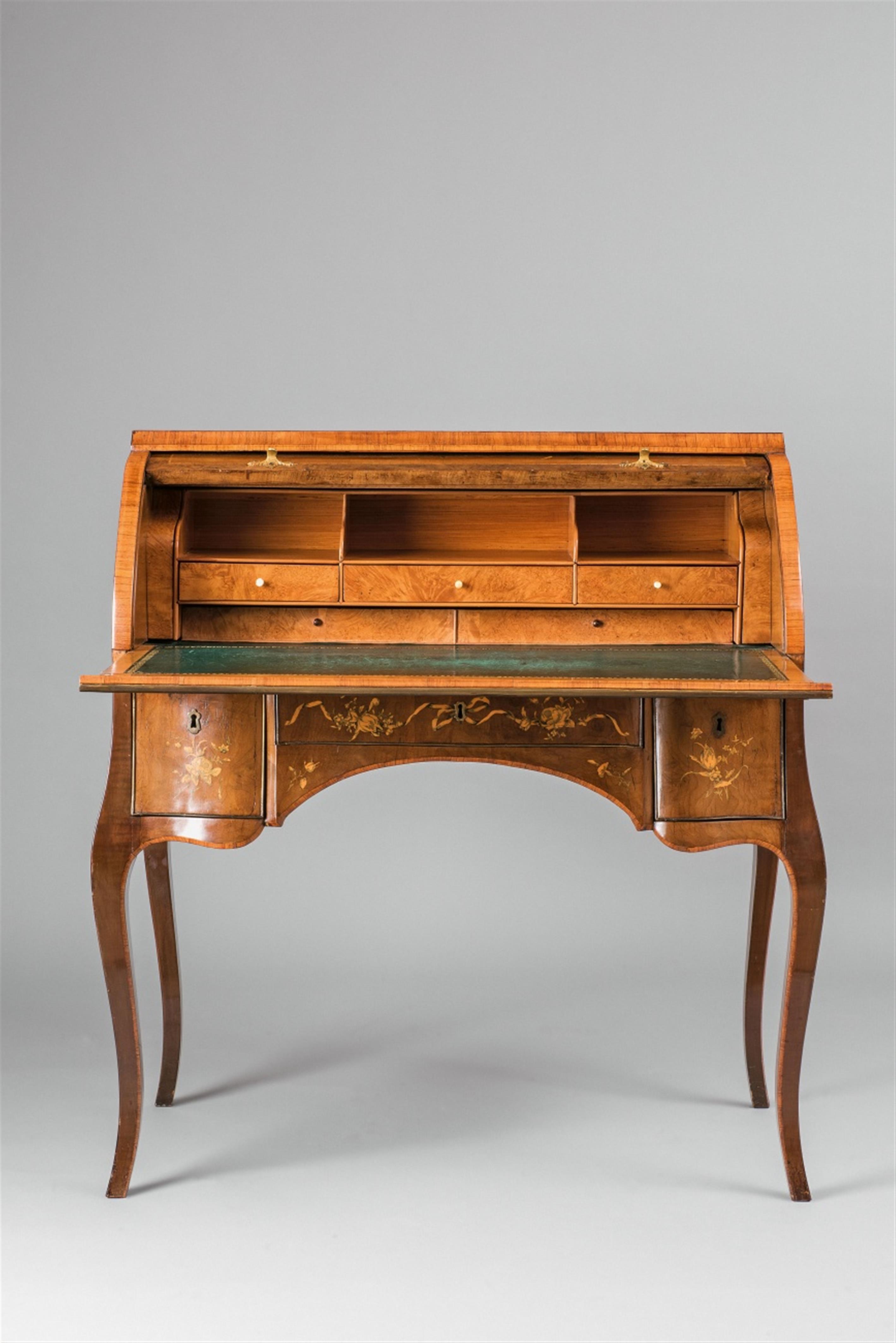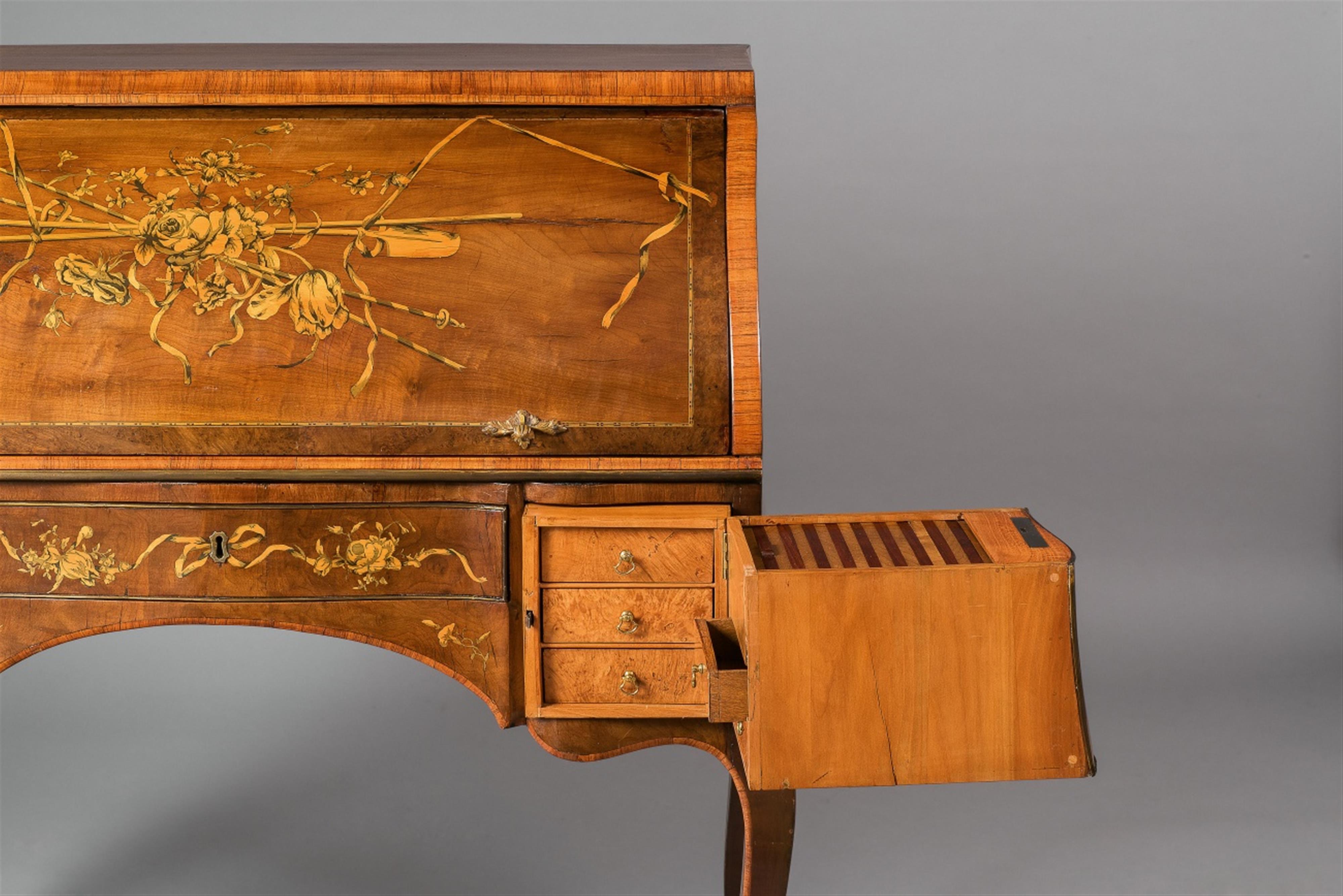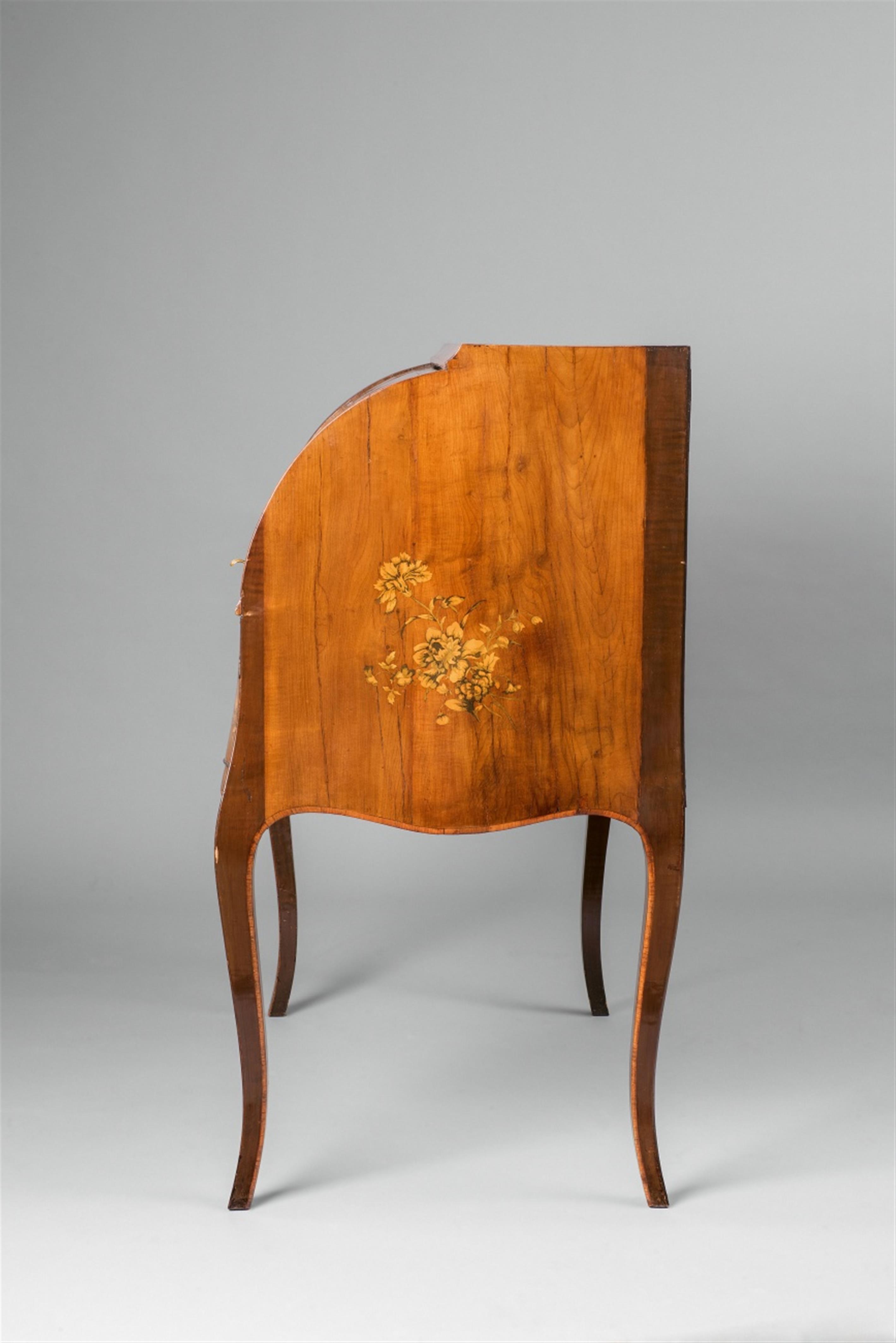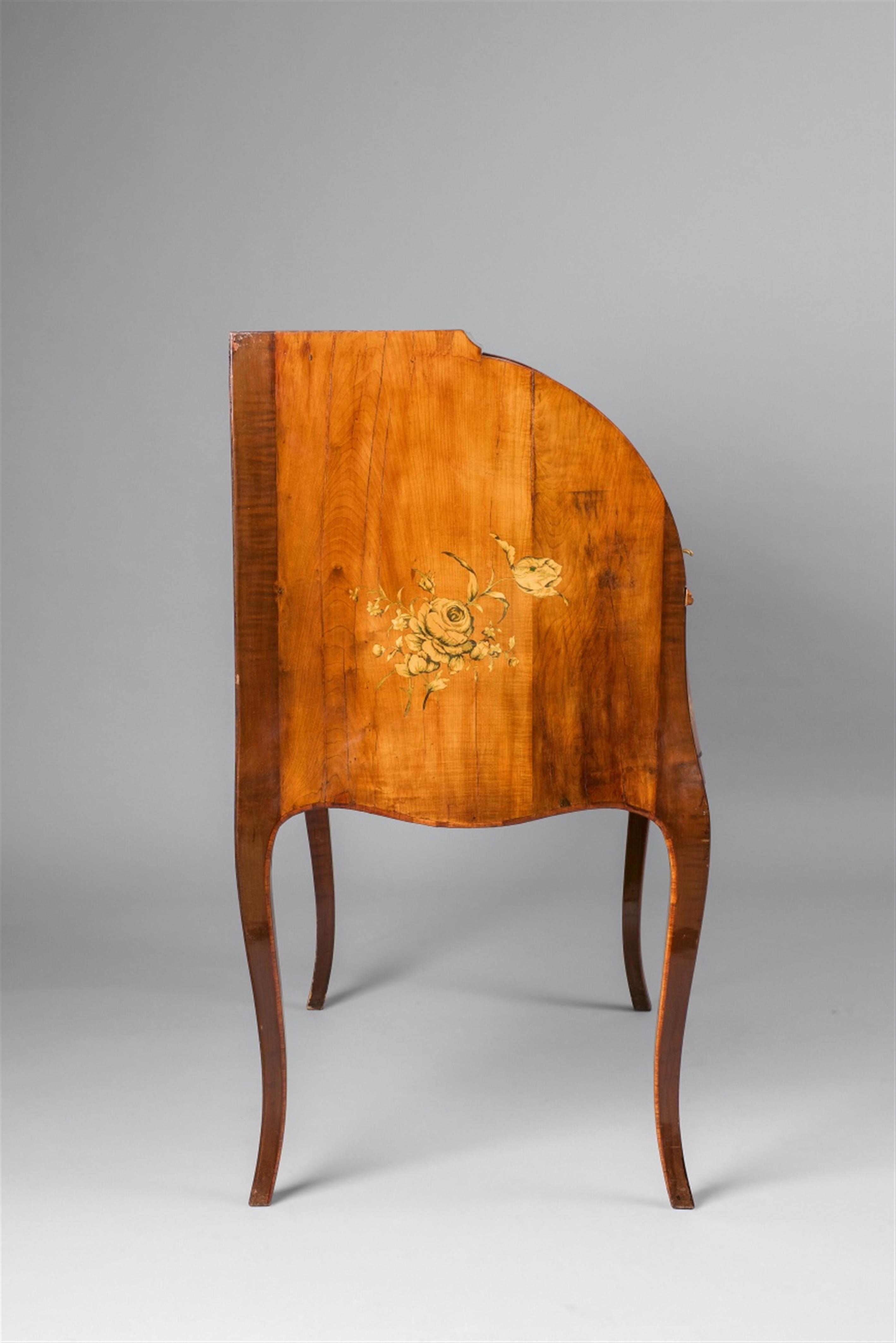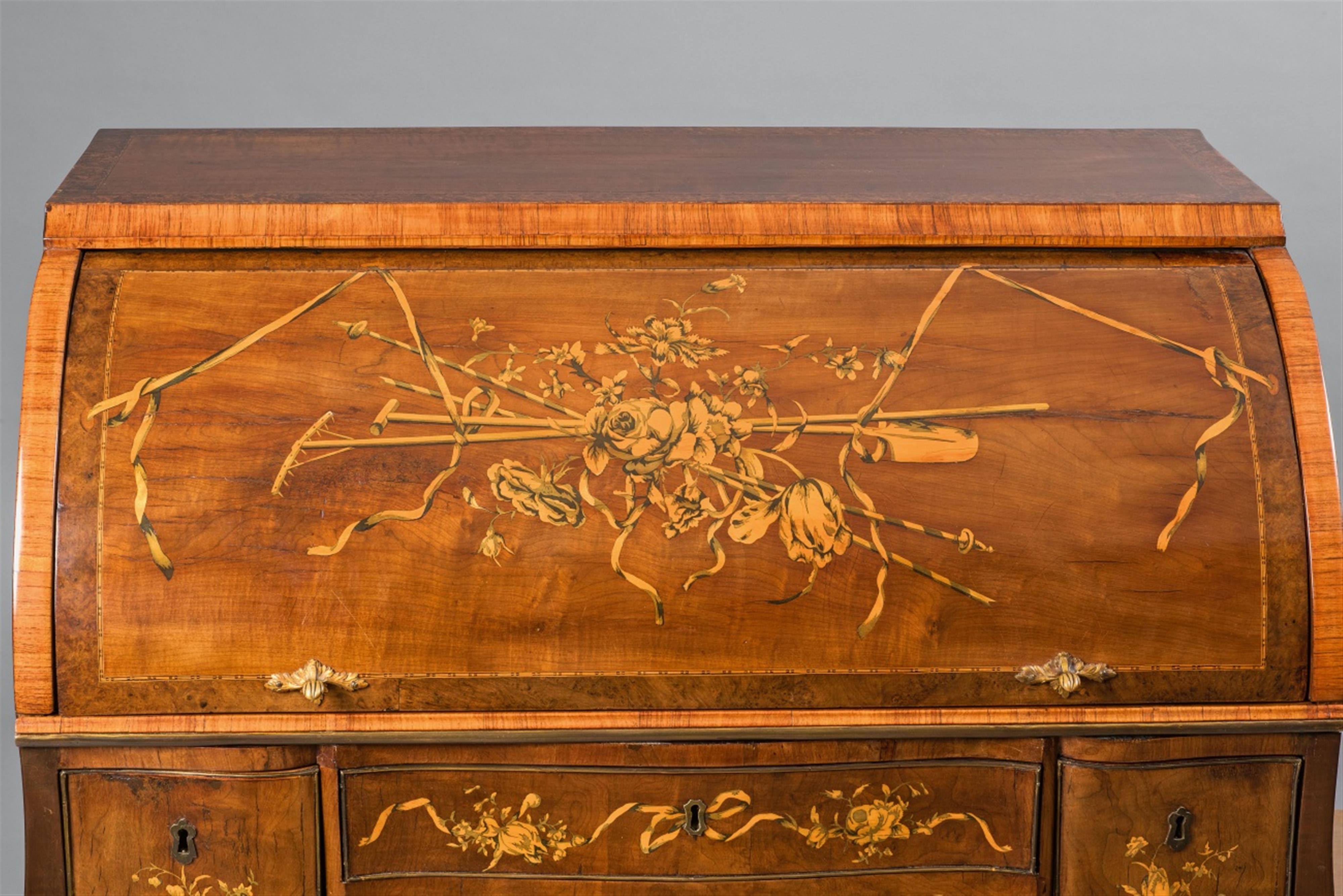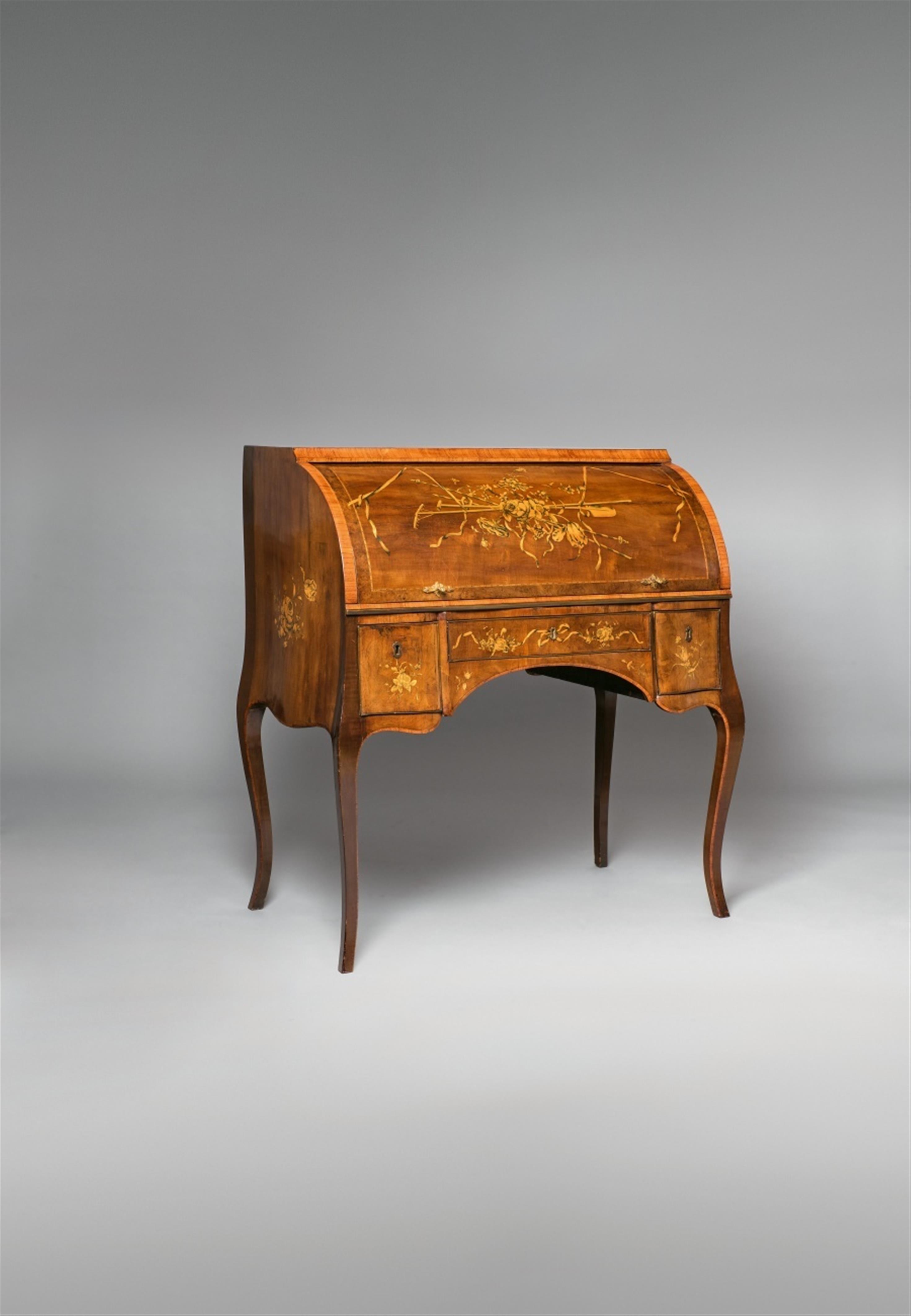A David Roentgen cylinder bureau
Palisander, rosewood, burr walnut, plum, boxwood, and various tinted woods on oak, cherry, and walnut, ivory, gilt embossed green leather (replaced), steel locks, gilt bronze mountings. Multi-functional writing desk to be placed against a wall. The cylinder is opened by pulling out the writing surface to reveal three drawers and three pigeon holes. Two faux-drawers below. The apron with a broad, narrow central drawer flanked by two larger drawers which can be pulled out and tilted.
With floral inlays to the front and sides, the cylinder with a ribbon-tied bundle of garden tools, roses, and tulips. Older filled shrinkage cracks running horizontally along the cylinder and vertically along the sides, filled breakages to the right side compartment. H 105, W 99, D 56 cm.
Neuwied, mid-1770s.
Roentgen's first desk with a cylinder mechanism was is thought to be the piece made for Electoress Maria Anna in 1773 housed in the Munich Residence. This piece has a very flat cylinder in comparison to the two other cylinder desks in the Residence dated 1773 and 1775, although they are similarly proportioned. The bombé form, the curve of the legs, and the arrangement of the drawers did not change throughout the first years of production. The forms used in 1755 were still heavily inspired by English pieces, but later works began to display a mature, finely curved design which later developed into the angular Neoclassical forms of the 1780s.
The marquetry used in this piece allows us to date it with relative certainty to the 1770s. In the 1760s, flowers were still combined with lush rocaille scrolls. Ten years later, these C- and S-shaped curves would be superseded by increasingly naturalistic designs such as combinations of flowers and everyday objects, here in the form of garden tools bound together with a ribbon in the manner of a trophy still life. A similar inlaid motif is found on a writing cabinet owned by the Counts of Dohna mentioned in Fabian's publication.
Certificate
Expertise from Martinet in Geneva dated 1948.
Provenance
Swiss private collection.
Literature
Cf. Hojer/Ottomeyer (ed.), Die Möbel der Residenz München II, Munich 1996, p. 219-239.
Cf. Fabian, Roentgen Möbel aus Neuwied, Bad Neustadt 1986, illus. 186 ff, illus. 389-392.

